
Hands-On MQTT Programming with Python
¥63.21
Explore the features included in the latest versions of MQTT for IoT and M2M communications and use them with modern Python 3. About This Book ? Make your connected devices less prone to attackers by understanding security mechanisms ? Take advantage of MQTT features for IoT and Machine-to-Machine communications ? The only book that covers MQTT with a single language, Python Who This Book Is For This book is for developers who want to learn about the MQTT protocol for their IoT projects. Prior knowledge of working with IoT and Python will be helpful. What You Will Learn ? Learn how MQTT and its lightweight messaging system work ? Understand the MQTT puzzle: clients, servers (formerly known as brokers), and connections ? Explore the features included in the latest versions of MQTT for IoT and M2M communications ? Publish and receive MQTT messages with Python ? Learn the difference between blocking and threaded network loops ? Take advantage of the last will and testament feature ? Work with cloud-based MQTT interfaces in Python In Detail MQTT is a lightweight messaging protocol for small sensors and mobile devices. This book explores the features of the latest versions of MQTT for IoT and M2M communications, how to use them with Python 3, and allow you to interact with sensors and actuators using Python. The book begins with the specific vocabulary of MQTT and its working modes, followed by installing a Mosquitto MQTT broker. You will use different utilities and diagrams to understand the most important concepts related to MQTT. You will learn to?make all the necessary configuration to work with digital certificates for encrypting all data sent between the MQTT clients and the server. You will also work with the different Quality of Service levels and later analyze and compare their overheads. You will write Python 3.x code to control a vehicle with MQTT messages delivered through encrypted connections (TLS 1.2), and learn how leverage your knowledge of the MQTT protocol to build a solution based on requirements. Towards the end, you will write Python code to use the PubNub cloud-based real-time MQTT provider to monitor a surfing competition. In the end, you will have a solution that was built from scratch by analyzing the requirements and then write Python code that will run on water-proof IoT boards connected to multiple sensors in surfboards. Style and approach This book shows you what MQTT is, and how to install and secure an MQTT server. You will write Python 3 code to control a vehicle with MQTT messages, test and improve, then monitor a surfing competition with cloud-based real-time MQTT providers.
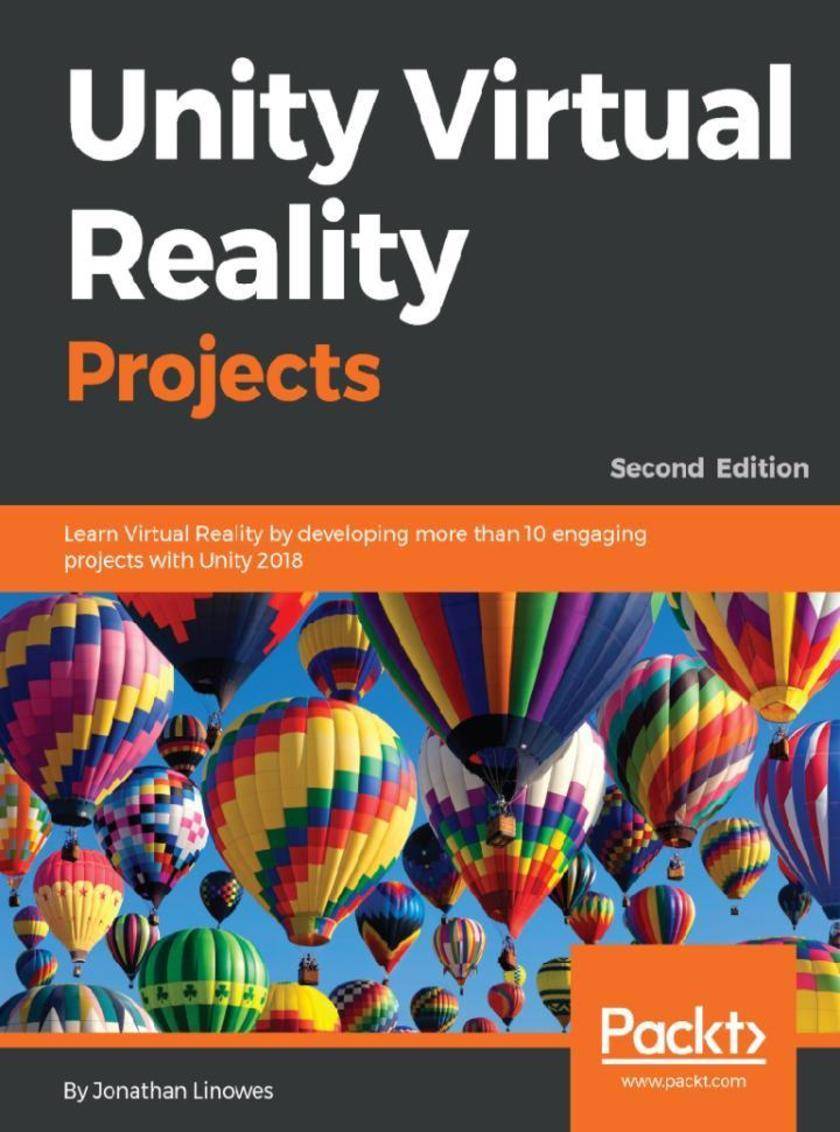
Unity Virtual Reality Projects
¥90.46
Explore the latest features of Unity 2018 to create immersive VR projects for Oculus Rift, HTC Vive, Daydream and Gear VR About This Book ? A project-based guide to teach you how to develop immersive and fun VR applications using Unity 3D ? Build experiences with interactable objects, physics, UI, animations, C# scripting, and other Unity features ? Explore the world of VR by building experiences such as diorama, first-person characters, 360-degree projections, social VR, audio fireball game, and VR storytelling Who This Book Is For If you're a non-programmer unfamiliar with 3D computer graphics, or experienced in both but new to virtual reality, and are interested in building your own VR games or applications, then this book is for you. Any experience in Unity is an advantage. What You Will Learn ? Create 3D scenes with Unity and other 3D tools while learning about world space and scale ? Build and run VR applications for specific headsets, including Oculus, Vive, and Daydream ? Interact with virtual objects using eye gaze, hand controllers, and user input events ? Move around your VR scenes using locomotion and teleportation ? Implement an audio fireball game using physics and particle systems ? Implement an art gallery tour with teleportation and data info ? Design and build a VR storytelling animation with a soundtrack and timelines ? Create social VR experiences with Unity networking In Detail Unity has become the leading platform for building virtual reality games, applications, and experiences for this new generation of consumer VR devices. Unity Virtual Reality Projects walks you through a series of hands-on tutorials and in-depth discussions on using the Unity game engine. With its practical and project-based approach, this book will get you up to speed with the specifics of Virtual Reality development in Unity. You will learn how to use Unity to develop VR applications that can be experienced with devices such as Oculus, Daydream, and Vive. Among the many topics and projects, you will explore gaze-based versus hand controller input, world space UI canvases, locomotion and teleportation, software design patterns, 360-degree media, timeline animation, and multiplayer networking. You will learn the Unity 3D game engine via the interactive Unity Editor as well as C# programming. By the end of the book, you will be fully equipped to develop rich, interactive virtual reality experiences using Unity. Style and approach A practical step-by-step guide to building impressive VR experiences with Unity 2018.
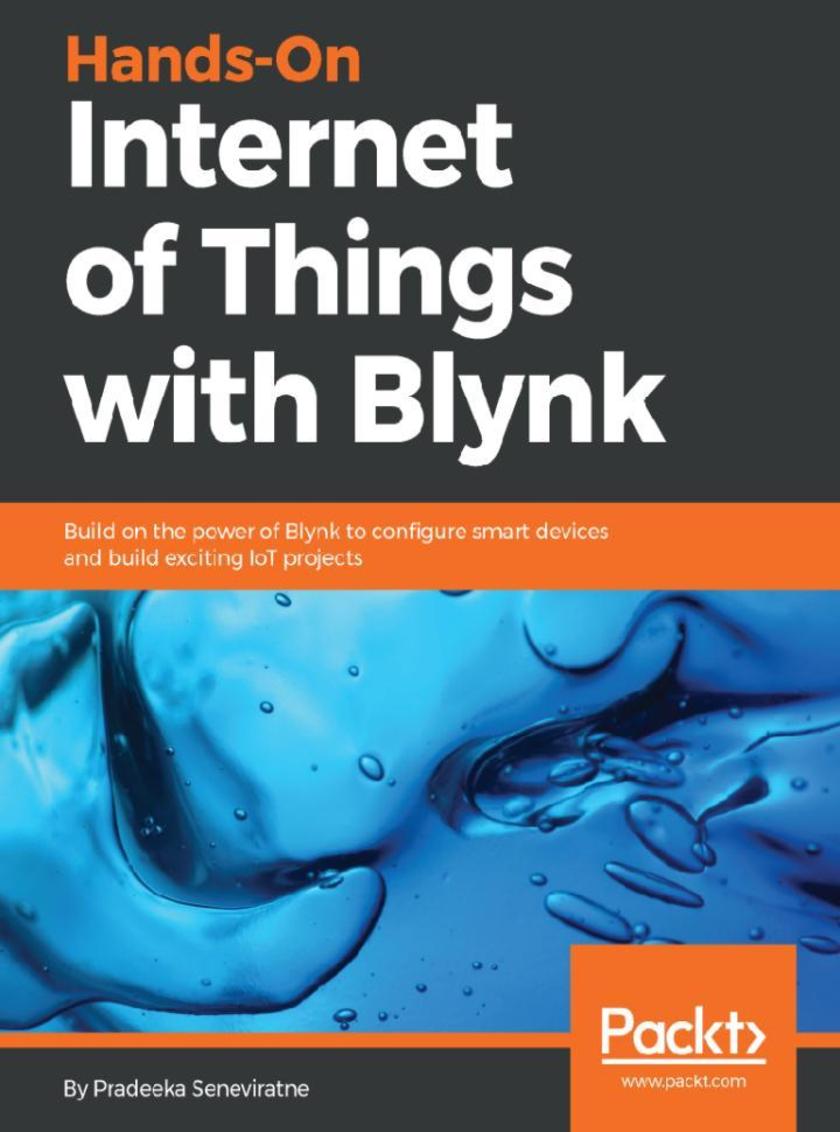
Hands-On Internet of Things with Blynk
¥63.21
Connect things to create amazing IoT applications in minutes About This Book ? Use Blynk cloud and Blynk server to connect devices ? Build IoT applications on Android and iOS platforms ? A practical guide that will show how to connect devices using Blynk and Raspberry Pi 3 Who This Book Is For This book is targeted at any stakeholder working in the IoT sector who wants to understand how Blynk works and build exciting IoT projects. Prior understanding of Raspberry Pi, C/C++, and electronics is a must. What You Will Learn ? Build devices using Raspberry Pi and various sensors and actuators ? Use Blynk cloud to connect and control devices through the Blynk app ? Connect devices to Blynk cloud and server through Ethernet and Wi-Fi ? Make applications using Blynk apps (App Builder) on Android and iOS platforms ? Run Blynk personal server on the Windows, MAC, and Raspberry Pi platforms In Detail Blynk, known as the most user-friendly IoT platform, provides a way to build mobile applications in minutes. With the Blynk drag-n-drop mobile app builder, anyone can build amazing IoT applications with minimal resources and effort, on hardware ranging from prototyping platforms such as Arduino and Raspberry Pi 3 to industrial-grade ESP8266, Intel, Sierra Wireless, Particle, Texas Instruments, and a few others. This book uses Raspberry Pi as the main hardware platform and C/C++ to write sketches to build projects. The first part of this book shows how to set up a development environment with various hardware combinations and required software. Then you will build your first IoT application with Blynk using various hardware combinations and connectivity types such as Ethernet and Wi-Fi. Then you'll use and configure various widgets (control, display, notification, interface, time input, and some advanced widgets) with Blynk App Builder to build applications. Towards the end, you will learn how to connect with and use built-in sensors on Android and iOS mobile devices. Finally you will learn how to build a robot that can be controlled with a Blynk app through the Blynk cloud and personal server. By the end of this book, you will have hands-on experience building IoT applications using Blynk. Style and approach A step-by-step guide that will help you build simple yet exciting project in no time.
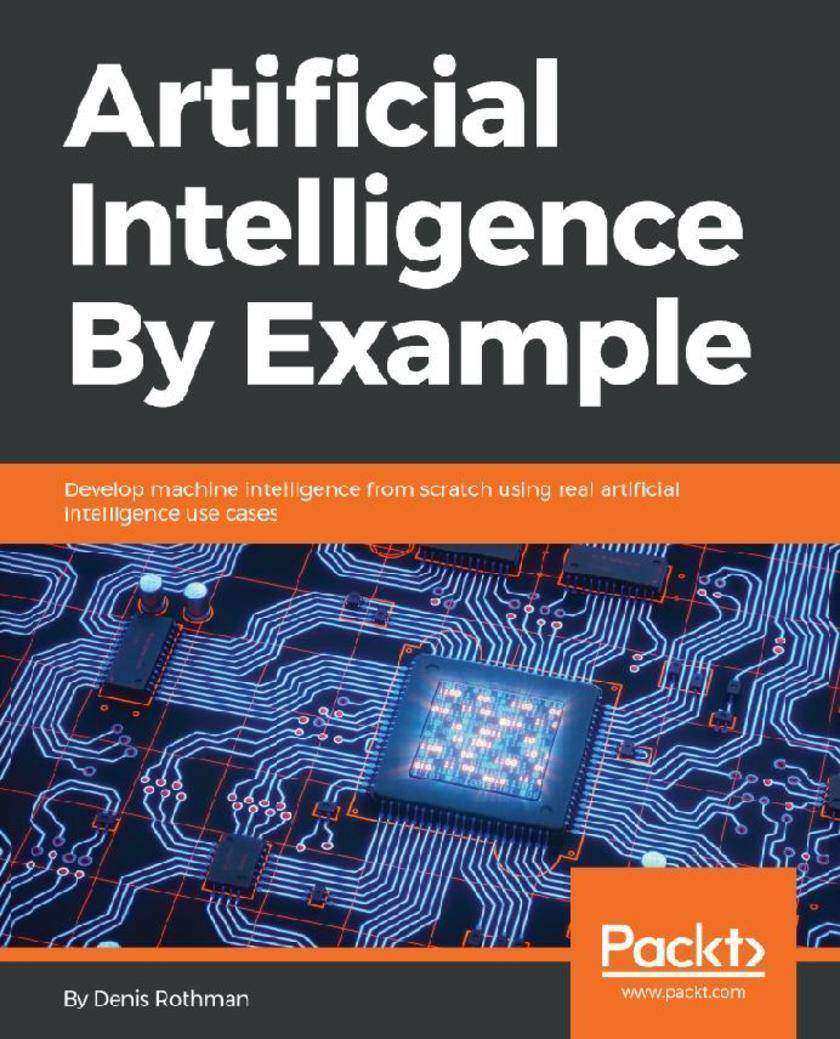
Artificial Intelligence By Example
¥73.02
Be an adaptive thinker that leads the way to Artificial Intelligence About This Book ? AI-based examples to guide you in designing and implementing machine intelligence ? Develop your own method for future AI solutions ? Acquire advanced AI, machine learning, and deep learning design skills Who This Book Is For Artificial Intelligence by Example is a simple, explanatory, and descriptive guide for junior developers, experienced developers, technology consultants, and those interested in AI who want to understand the fundamentals of Artificial Intelligence and implement it practically by devising smart solutions. Prior experience with Python and statistical knowledge is essential to make the most out of this book. What You Will Learn ? Use adaptive thinking to solve real-life AI case studies ? Rise beyond being a modern-day factory code worker ? Acquire advanced AI, machine learning, and deep learning designing skills ? Learn about cognitive NLP chatbots, quantum computing, and IoT and blockchain technology ? Understand future AI solutions and adapt quickly to them ? Develop out-of-the-box thinking to face any challenge the market presents In Detail Artificial Intelligence has the potential to replicate humans in every field. This book serves as a starting point for you to understand how AI is built, with the help of intriguing examples and case studies. Artificial Intelligence By Example will make you an adaptive thinker and help you apply concepts to real-life scenarios. Using some of the most interesting AI examples, right from a simple chess engine to a cognitive chatbot, you will learn how to tackle the machine you are competing with. You will study some of the most advanced machine learning models, understand how to apply AI to blockchain and IoT, and develop emotional quotient in chatbots using neural networks. You will move on to designing AI solutions in a simple manner rather than get confused by complex architectures and techniques. This comprehensive guide will be a starter kit for you to develop AI applications on your own. By the end of this book, will have understood the fundamentals of AI and worked through a number of case studies that will help you develop business vision. Style and approach An easy-to-follow step by step guide which will help you get to grips with real world application of Artificial Intelligence
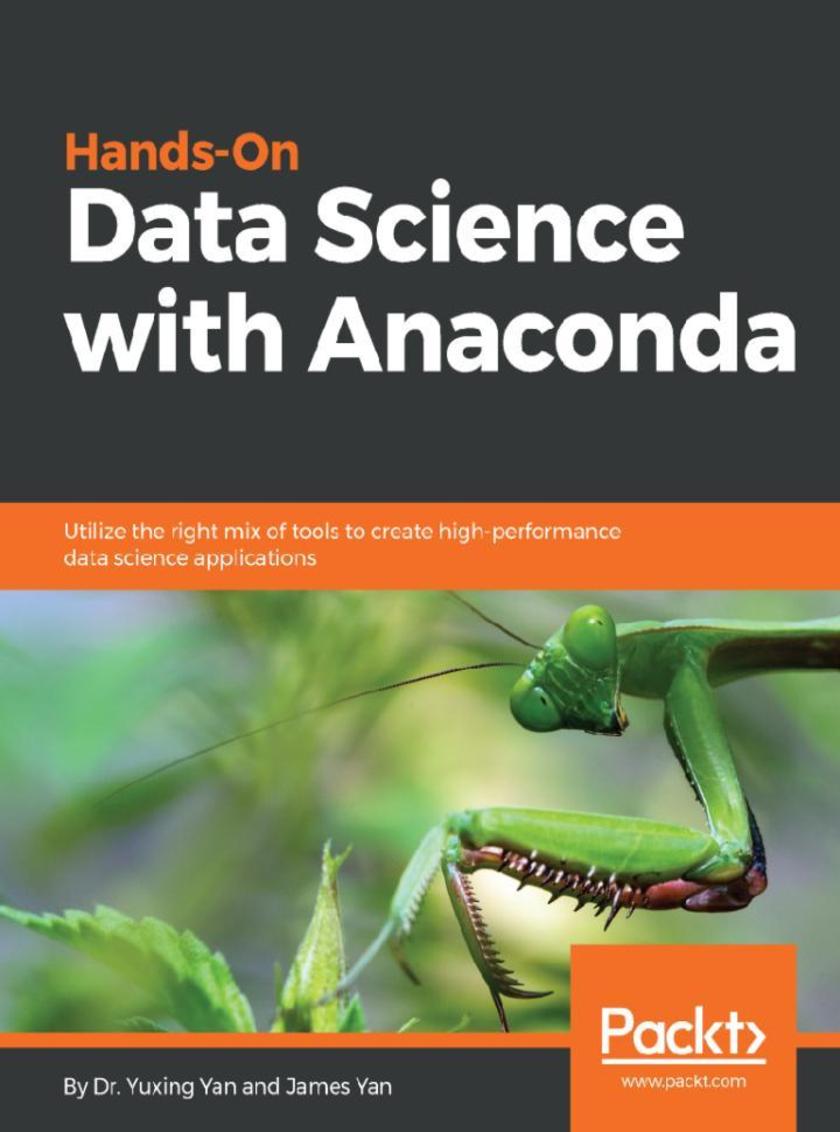
Hands-On Data Science with Anaconda
¥63.21
Develop, deploy, and streamline your data science projects with the most popular end-to-end platform, Anaconda About This Book ? Use Anaconda to find solutions for clustering, classification, and linear regression ? Analyze your data efficiently with the most powerful data science stack ? Use the Anaconda cloud to store, share, and discover projects and libraries Who This Book Is For Hands-On Data Science with Anaconda is for you if you are a developer who is looking for the best tools in the market to perform data science. It’s also ideal for data analysts and data science professionals who want to improve the efficiency of their data science applications by using the best libraries in multiple languages. Basic programming knowledge with R or Python and introductory knowledge of linear algebra is expected. What You Will Learn ? Perform cleaning, sorting, classification, clustering, regression, and dataset modeling using Anaconda ? Use the package manager conda and discover, install, and use functionally efficient and scalable packages ? Get comfortable with heterogeneous data exploration using multiple languages within a project ? Perform distributed computing and use Anaconda Accelerate to optimize computational powers ? Discover and share packages, notebooks, and environments, and use shared project drives on Anaconda Cloud ? Tackle advanced data prediction problems In Detail Anaconda is an open source platform that brings together the best tools for data science professionals with more than 100 popular packages supporting Python, Scala, and R languages. Hands-On Data Science with Anaconda gets you started with Anaconda and demonstrates how you can use it to perform data science operations in the real world. The book begins with setting up the environment for Anaconda platform in order to make it accessible for tools and frameworks such as Jupyter, pandas, matplotlib, Python, R, Julia, and more. You’ll walk through package manager Conda, through which you can automatically manage all packages including cross-language dependencies, and work across Linux, macOS, and Windows. You’ll explore all the essentials of data science and linear algebra to perform data science tasks using packages such as SciPy, contrastive, scikit-learn, Rattle, and Rmixmod. Once you’re accustomed to all this, you’ll start with operations in data science such as cleaning, sorting, and data classification. You’ll move on to learning how to perform tasks such as clustering, regression, prediction, and building machine learning models and optimizing them. In addition to this, you’ll learn how to visualize data using the packages available for Julia, Python, and R. Style and approach This book is your step-by-step guide full of use cases, examples and illustrations to get you well-versed with the concepts of Anaconda.
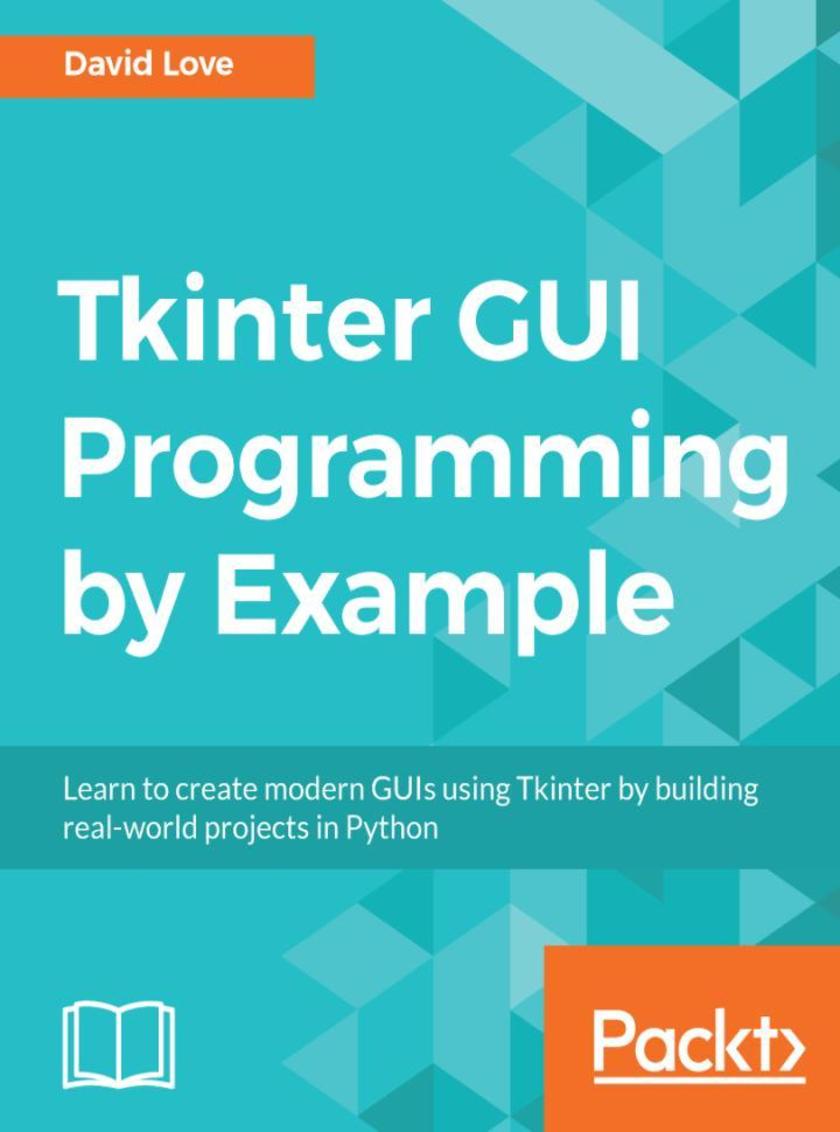
Tkinter GUI Programming by Example
¥90.46
Leverage the power of Python and its de facto GUI framework to build highly interactive interfaces About This Book ? The fundamentals of Python and GUI programming with Tkinter. ? Create multiple cross-platform projects by integrating a host of third-party libraries and tools. ? Build beautiful and highly-interactive user interfaces that target multiple devices. Who This Book Is For This book is for beginners to GUI programming who haven’t used Tkinter yet and are eager to start building great-looking and user-friendly GUIs. Prior knowledge of Python programming is expected. What You Will Learn ? Create a scrollable frame via theCanvas widget ? Use the pack geometry manager andFrame widget to control layout ? Learn to choose a data structurefor a game ? Group Tkinter widgets, such asbuttons, canvases, and labels ? Create a highly customizablePython editor ? Design and lay out a chat window In Detail Tkinter is a modular, cross-platform application development toolkit for Python. When developing GUI-rich applications, the most important choices are which programming language(s) and which GUI framework to use. Python and Tkinter prove to be a great combination. This book will get you familiar with Tkinter by having you create fun and interactive projects. These projects have varying degrees of complexity. We'll start with a simple project, where you'll learn the fundamentals of GUI programming and the basics of working with a Tkinter application. After getting the basics right, we'll move on to creating a project of slightly increased complexity, such as a highly customizable Python editor. In the next project, we'll crank up the complexity level to create an instant messaging app. Toward the end, we'll discuss various ways of packaging our applications so that they can be shared and installed on other machines without the user having to learn how to install and run Python programs. Style and approach Step by Step guide with real world examples
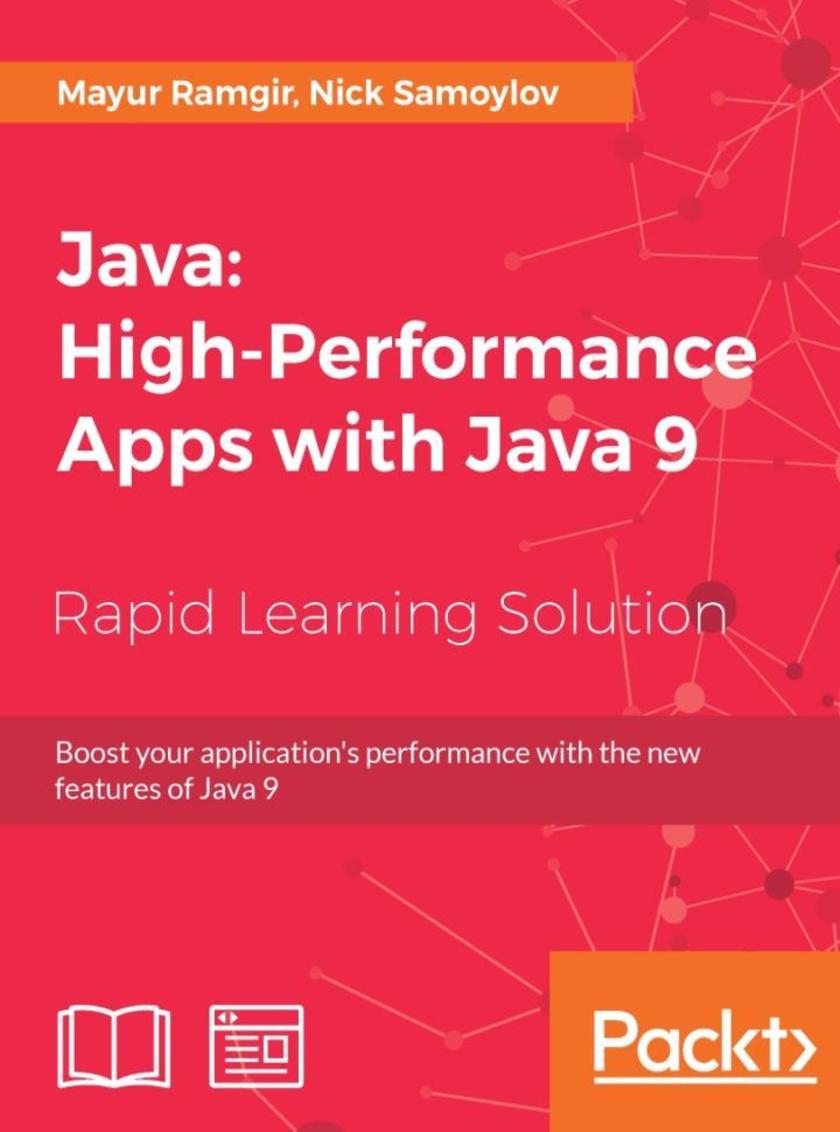
Java: High-Performance Apps with Java 9
¥73.02
Optimize the powerful techniques of Java 9 to boost your application's performance About This Book ? Tackle all kinds of performance-related issues and streamline your development ? Dive into the new features of Java 9 ? Implement highly efficient and reliable codes with the help of new APIs of Java ? Embedded with assessments that will help you revise the concepts you have learned in this book Who This Book Is For This book is targeted at developers who would like to build reliable and high-performance applications with Java. What You Will Learn ? Familiarize with modular development and its impact on performance ? Learn various string-related performance improvements, including compact string and modify string concatenation ? Explore various underlying compiler improvements, such as tiered attribution and Ahead-of-Time (AOT) compilation ? Learn security manager improvements ? Understand enhancements in graphics rasterizers ? Use of command-line tools to speed up application development ? Learn how to implement multithreading and reactive programming ? Build microservices in Java 9 ? Implement APIs to improve application code In Detail Java 9 which is one of the most popular application development languages. The latest released version Java 9 comes with a host of new features and new APIs with lots of ready to use components to build efficient and scalable applications. Streams, parallel and asynchronous processing, multithreading, JSON support, reactive programming, and microservices comprise the hallmark of modern programming and are now fully integrated into the JDK. This book focuses on providing quick, practical solutions to enhance your application's performance. You will explore the new features, APIs, and various tools added in Java 9 that help to speed up the development process. You will learn about jshell, Ahead-of-Time (AOT) compilation, and the basic threads related topics including sizing and synchronization. You will also explore various strategies for building microservices including container-less, self-contained, and in-container. This book is ideal for developers who would like to build reliable and high-performance applications with Java. This book is embedded with useful assessments that will help you revise the concepts you have learned in this book. Style and approach This book is a fast-paced guide that provides practical solutions to enhance your application’s performance. Note: This book is a blend of text and quizzes, all packaged up keeping your journey in mind. It includes content from the following Packt product: ? Java 9 High Performance by Mayur Ramgir and Nick Samoylov
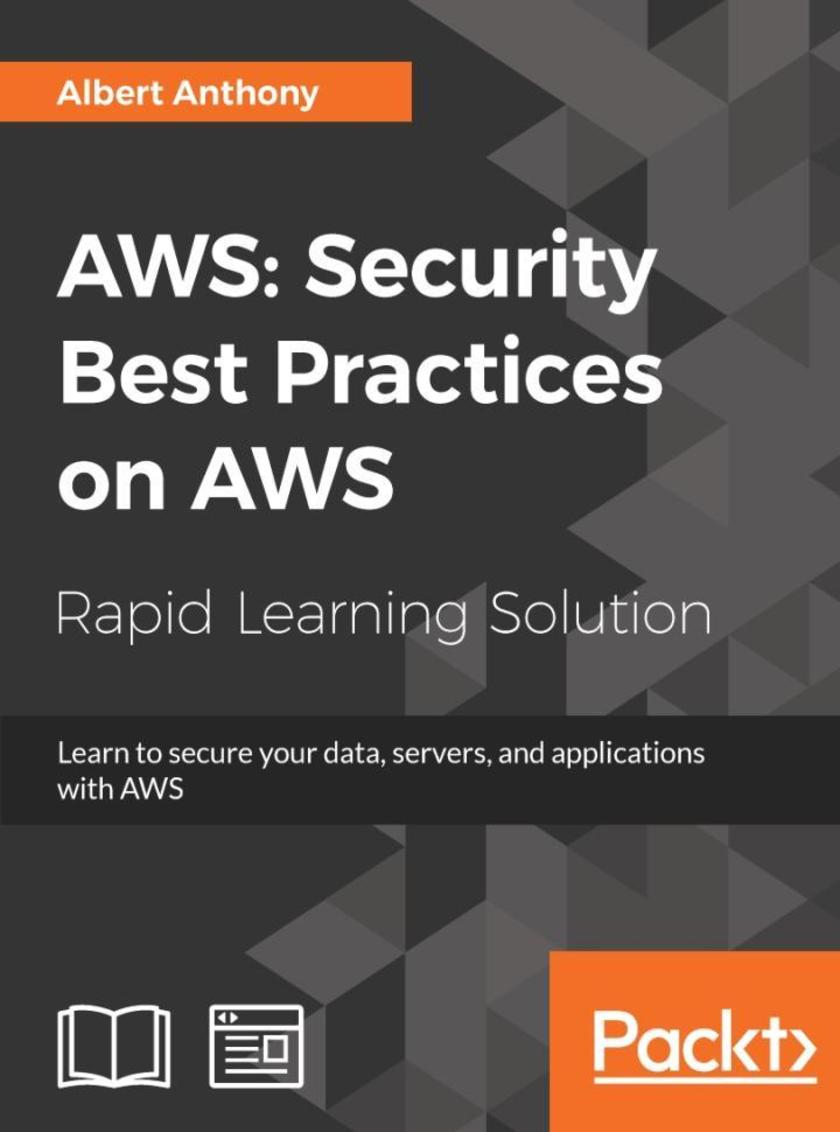
AWS: Security Best Practices on AWS
¥73.02
Delve deep into various security aspects of AWS to build and maintain a secured environment About This Book ? Learn to secure your network, infrastructure, data, and applications in AWS cloud ? Use AWS managed security services to automate security ? Dive deep into various aspects such as the security model, compliance, access management and much more to build and maintain a secured environment ? Explore Cloud Adoption Framework (CAF) and its components ? Embedded with assessments that will help you revise the concepts you have learned in this book Who This Book Is For This book is for all IT professionals, system administrators, security analysts, solution architects, and chief information security officers who are responsible for securing workloads in AWS for their organizations. What You Will Learn ? Get familiar with VPC components, features, and benefits ? Learn to create and secure your private network in AWS ? Explore encryption and decryption fundamentals ? Understand monitoring, logging, and auditing in AWS ? Ensure data security in AWS ? Secure your web and mobile applications in AWS ? Learn security best practices for IAM, VPC, shared security responsibility model, and so on In Detail With organizations moving their workloads, applications, and infrastructure to the cloud at an unprecedented pace, security of all these resources has been a paradigm shift for all those who are responsible for security; experts, novices, and apprentices alike. This book focuses on using native AWS security features and managed AWS services to help you achieve continuous security. Starting with an introduction to Virtual Private Cloud (VPC) to secure your AWS VPC, you will quickly explore various components that make up VPC such as subnets, security groups, various gateways, and many more. You will also learn to protect data in the AWS platform for various AWS services by encrypting and decrypting data in AWS. You will also learn to secure web and mobile applications in AWS cloud. This book is ideal for all IT professionals, system administrators, security analysts, solution architects, and chief information security officers who are responsible for securing workloads in AWS for their organizations. This book is embedded with useful assessments that will help you revise the concepts you have learned in this book. Style and approach This book follows a practical approach delving into different aspects of AWS security. It focuses on using native AWS security features and managed AWS services to help you achieve continuous security. Note: This book is a blend of text and quizzes, all packaged up keeping your journey in mind. It includes content from the following Packt product: ? Mastering AWS Security by Albert Anthony

Spring: Microservices with Spring Boot
¥73.02
Unlock the power of Spring Boot to build and deploy production-ready microservices About This Book ? Get to know the advanced features of Spring Boot in order to develop and monitor applications ? Use Spring cloud to deploy and manage microservices on the cloud ? Look at embedded servers and deploy a test application to a PaaS Cloud platform ? Embedded with assessments that will help you revise the concepts you have learned in this book Who This Book Is For This book is aimed at Java developers who knows the basics of Spring programming and want to build microservices with Spring Boot. What You Will Learn ? Use Spring Initializr to create a basic spring project ? Build a basic microservice with Spring Boot ? Implement caching and exception handling ? Secure your microservice with Spring security and OAuth2 ? Deploy microservices using self-contained HTTP server ? Monitor your microservices with Spring Boot actuator ? Learn to develop more effectively with developer tools In Detail Microservices helps in decomposing applications into small services and move away from a single monolithic artifact. It helps in building systems that are scalable, flexible, and high resilient. Spring Boot helps in building REST-oriented, production-grade microservices. This book is a quick learning guide on how to build, monitor, and deploy microservices with Spring Boot. You'll be first familiarized with Spring Boot before delving into building microservices. You will learn how to document your microservice with the help of Spring REST docs and Swagger documentation. You will then learn how to secure your microservice with Spring Security and OAuth2. You will deploy your app using a self-contained HTTP server and also learn to monitor a microservice with the help of Spring Boot actuator. This book is ideal for Java developers who knows the basics of Spring programming and want to build microservices with Spring Boot. This book is embedded with useful assessments that will help you revise the concepts you have learned in this book. Style and approach This book follows a practical approach to teach you how to build, monitor, and deploy microservices with Spring Boot. Note: This book is a blend of text and quizzes, all packaged up keeping your journey in mind. It includes content from the following Packt product: ? Mastering Spring 5.0 by Ranga Rao Karanam

SQL Server 2017 Developer’s Guide
¥99.18
Build smarter and efficient database application systems for your organization with SQL Server 2017 About This Book ? Build database applications by using the development features of SQL Server 2017 ? Work with temporal tables to get information stored in a table at any time ? Use adaptive querying to enhance the performance of your queries Who This Book Is For Database developers and solution architects looking to design efficient database applications using SQL Server 2017 will find this book very useful. In addition, this book will be valuable to advanced analysis practitioners and business intelligence developers. Database consultants dealing with performance tuning will get a lot of useful information from this book as well. Some basic understanding of database concepts and T-SQL is required to get the best out of this book. What You Will Learn ? Explore the new development features introduced in SQL Server 2017 ? Identify opportunities for In-Memory OLTP technology ? Use columnstore indexes to get storage and performance improvements ? Exchange JSON data between applications and SQL Server ? Use the new security features to encrypt or mask the data ? Control the access to the data on the row levels ? Discover the potential of R and Python integration ? Model complex relationships with the graph databases in SQL Server 2017 In Detail Microsoft SQL Server 2017 is the next big step in the data platform history of Microsoft as it brings in the power of R and Python for machine learning and containerization-based deployment on Windows and Linux. Compared to its predecessor, SQL Server 2017 has evolved into Machine Learning with R services for statistical analysis and Python packages for analytical processing. This book prepares you for more advanced topics by starting with a quick introduction to SQL Server 2017’s new features and a recapitulation of the possibilities you may have already explored with previous versions of SQL Server. The next part introduces you to enhancements in the Transact-SQL language and new database engine capabilities and then switches to a completely new technology inside SQL Server: JSON support. We also take a look at the Stretch database, security enhancements, and temporal tables. Furthermore, the book focuses on implementing advanced topics, including Query Store, columnstore indexes, and In-Memory OLTP. Towards the end of the book, you’ll be introduced to R and how to use the R language with Transact-SQL for data exploration and analysis. You’ll also learn to integrate Python code in SQL Server and graph database implementations along with deployment options on Linux and SQL Server in containers for development and testing. By the end of this book, you will have the required information to design efficient, high-performance database applications without any hassle. Style and approach This book is a detailed guide to mastering the development features offered by SQL Server 2017, with a unique learn-as-you-do approach. All the concepts are explained in a very easy-to-understand manner and are supplemented with examples to ensure that you—the developer—are able to take that next step in building more powerful, robust applications for your organization with ease.
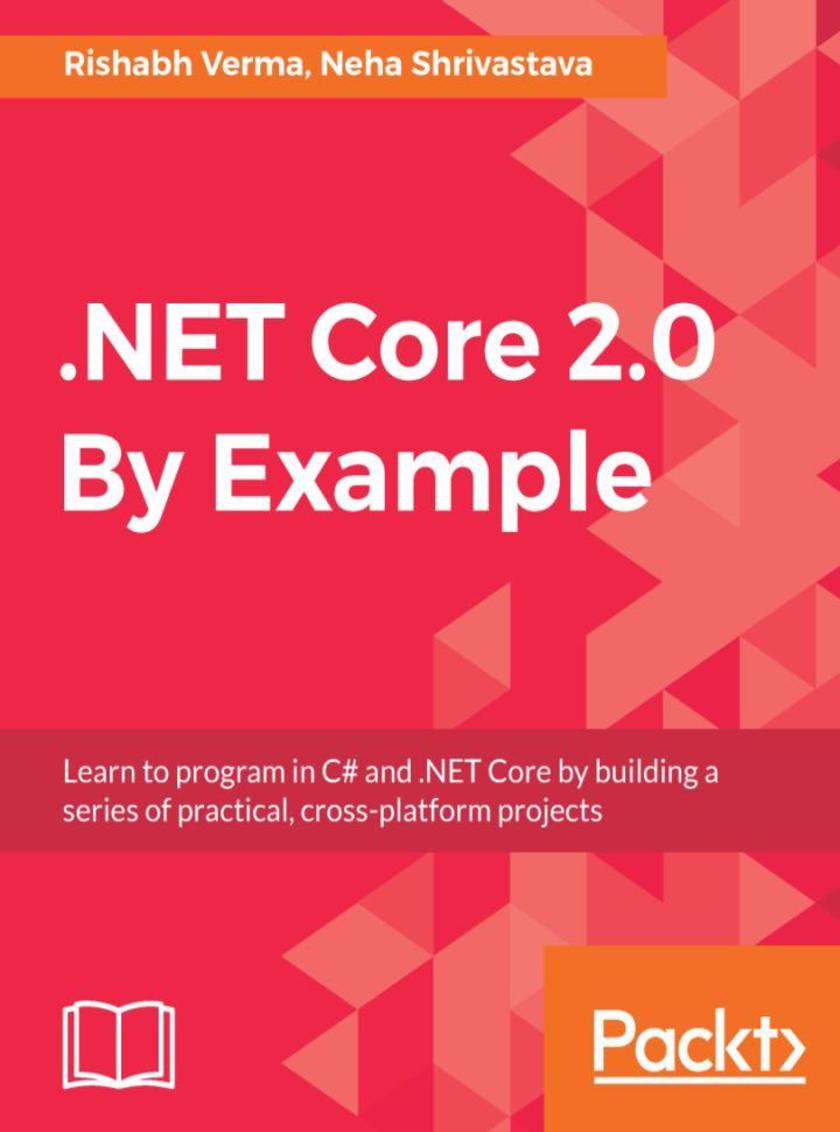
.NET Core 2.0 By Example
¥90.46
Build cross-platform solutions with .NET Core 2.0 through real-life scenarios About This Book ? Bridges the gap between learning and doing and improves your software development skills ? Covers the best practices of .NET development to improve your productivity ? Example-based approach to get you started quickly with software programming Who This Book Is For If you are a developer or architect and want to learn how to build cross-platform solutions using Microsoft .NET Core, this book is for you. It is assumed that you have some knowledge of the .NET Framework, OOP, and C# (or a similar programming language). What You Will Learn ? Build cross-platform applications with ASP.NET Core 2.0 and its tools ? Integrate, host, and deploy web apps with the cloud (Microsoft Azure) ? Leverage the ncurses native library to extend console capabilities in .NET Core on Linux and interop with native coden .NET Core on Linux and learn how to interop with existing native code ? Reuse existing .NET Framework and Mono assemblies from .NET Core 2.0 applications ? Develop real-time web applications using ASP.NET Core ? Learn the differences between SOA and microservices and get started with microservice development using ASP.NET Core 2.0 ? Walk through functional programming with F# and .NET Core from scratch In Detail With the rise in the number of tools and technologies available today, developers and architects are always exploring ways to create better and smarter solutions. Before, the differences between target platforms was a major roadblock, but that's not the case now. .NET Core 2.0 By Example will take you on an exciting journey to building better software. This book provides fresh and relevant content to .NET Core 2.0 in a succinct format that’s enjoyable to read. It also delivers concepts, along with the implications, design decisions, and potential pitfalls you might face when targeting Linux and Windows systems, in a logical and simple way. With the .NET framework at its center, the book comprises of five varied projects: a multiplayer Tic-tac-toe game; a real-time chat application, Let'sChat; a chatbot; a microservice-based buying-selling application; and a movie booking application. You will start each chapter with a high-level overview of the content, followed by the above example applications described in detail. By the end of each chapter, you will not only be proficient with the concepts, but you’ll also have created a tangible component in the application. By the end of the book, you will have built five solid projects using all the tools and support provided by the .NET Core 2.0 framework. Style and approach This book takes a concise yet comprehensive project-based approach to teaching the tricks and tools of .NET Core 2.0.
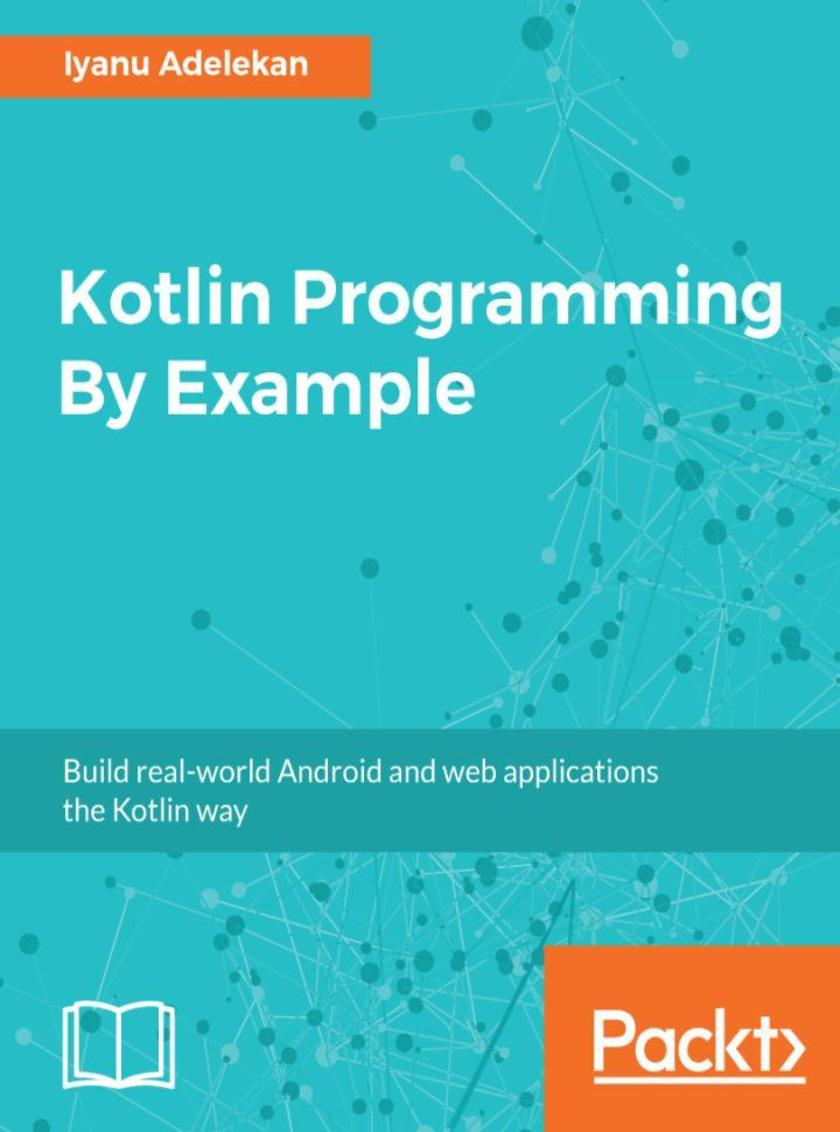
Kotlin Programming By Example
¥90.46
Enhance your Kotlin programming skills by building 3 real-world applications About This Book ? Build three full-fledged, engaging applications from scratch and learn to deploy them ? Enhance your app development and programming activities with Kotlin’s powerful and intuitive tools and utilities. ? Experience the gentle learning curve, expressiveness, and intuitiveness of Kotlin, as you develop your own applications Who This Book Is For This book is for those who are new to Kotlin or are familiar with the basics, having dabbled with Java until now. Basic programming knowledge is mandatory. What You Will Learn ? Learn the building blocks of the Kotlin programming language ? Develop powerful RESTful microservices for Android applications ? Create reactive Android applications efficiently ? Implement an MVC architecture pattern and dependency management using Kotlin ? Centralize, transform, and stash data with Logstash ? Secure applications using Spring Security ? Deploy Kotlin microservices to AWS and Android applications to the Play Store In Detail Kotlin greatly reduces the verbosity of source code. With Google having announced their support for Kotlin as a first-class language for writing Android apps, now's the time learn how to create apps from scratch with Kotlin Kotlin Programming By Example takes you through the building blocks of Kotlin, such as functions and classes. You’ll explore various features of Kotlin by building three applications of varying complexity. For a quick start to Android development, we look at building a classic game, Tetris, and elaborate on object-oriented programming in Kotlin. Our next application will be a messenger app, a level up in terms of complexity. Before moving onto the third app, we take a look at data persistent methods, helping us learn about the storage and retrieval of useful applications. Our final app is a place reviewer: a web application that will make use of the Google Maps API and Place Picker. By the end of this book, you will have gained experience of of creating and deploying Android applications using Kotlin. Style and approach Here we will build three exciting projects in Kotlin which will demonstrate how to effectively use Kotlin language constructs
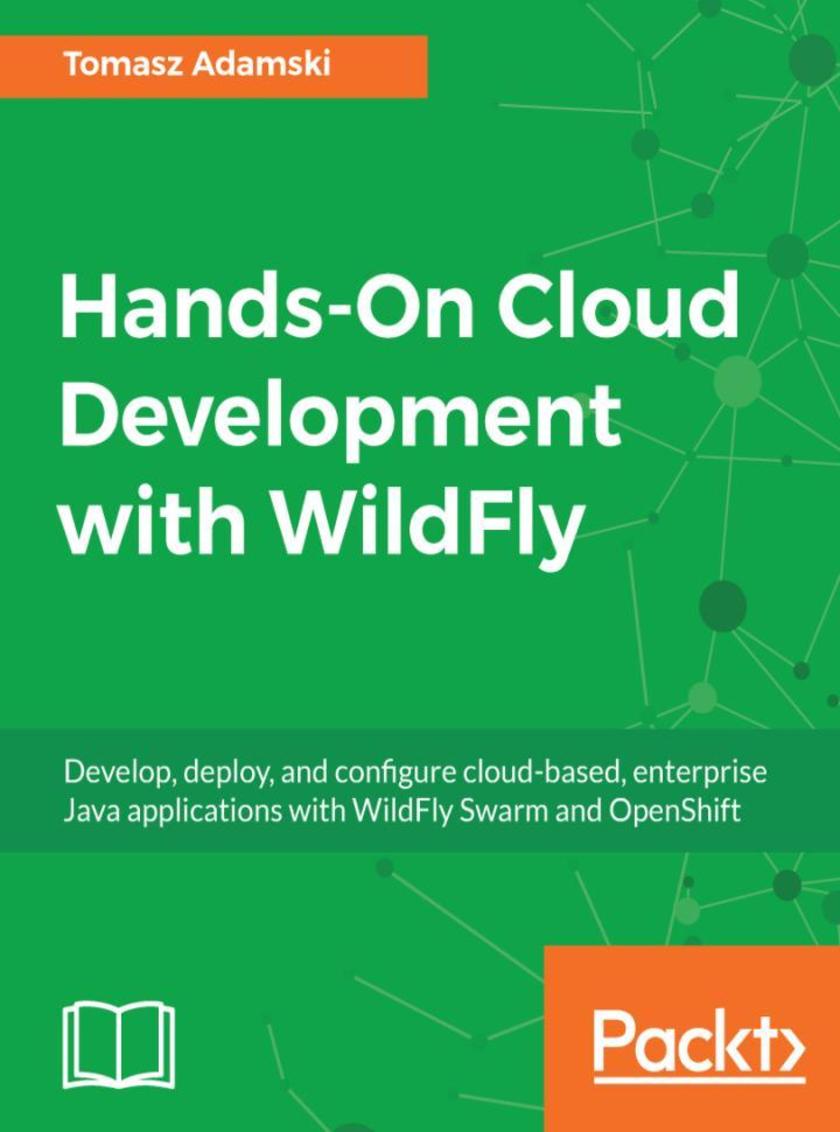
Hands-On Cloud Development with WildFly
¥81.74
Create microservices using Java EE technologies using WildFly Swarm,deploy them in the OpenShift cloud, make them resilient to network failures using Hystrix, configure continuous integration using Jenkins, and security using Keycloak. About This Book ? Create functional microservices with WildFly Swarm ? Use OpenShift to deploy your microservices in the cloud ? Make your application production-ready using Jenkins, Hystrix, and Keycloak Who This Book Is For If you're an experienced developer familiar with Java EE technologies and would like to learn how you can use those technologies in the cloud with WildFly and OpenShift, then this book is for you. What You Will Learn ? Utilize Java EE technology to develop modern cloud-enabled applications ? Easily create microservices with WildFly Swarm using proven Java EE technologies ? See the benefits of OpenShift – easy deployment of your services, out of the box scalability and healing, and integration with Continuous Integration tools ? Integrate the sample application with Jenkins’ Continuous Integration server ? Utilize Netflix OSS to connect your services and provide resilience to your application ? Provide security to your application using Keycloak In Detail The book starts by introducing you to WildFly Swarm—a tool that allows you to create runnable microservices from Java EE components. You’ll learn the basics of Swarm operation—creating a microservice containing only the parts of enterprise runtime needed in a specific case. Later, you’ll learn how to configure and test those services. In order to deploy our services in the cloud, we’ll use OpenShift. You’ll get to know basic information on its architecture, features, and relationship to Docker and Kubernetes. Later, you’ll learn how to deploy and configure your services to run in the OpenShift cloud. In the last part of the book, you’ll see how to make your application production-ready. You’ll find out how to configure continuous integration for your services using Jenkins, make your application resistant to network failures using Hystrix, and how to secure them using Keycloak. By the end of the book, you’ll have a fully functional example application and will have practical knowledge of Java EE cloud development that can be used as a reference in your other projects. Style and approach This example-based tutorial guides you step by step through creating an application based on well-known Java EE technologies (JAX-RS, CDI, JPA, and JSF) and modern architectural patterns.
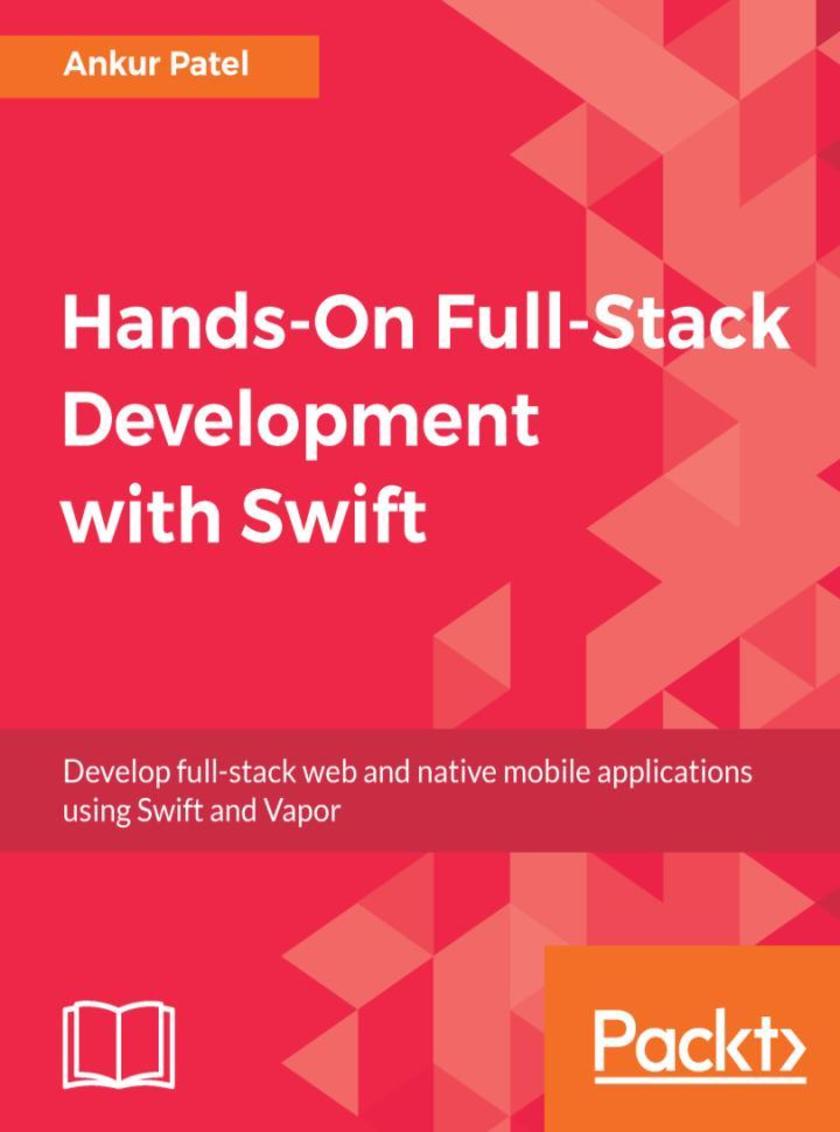
Hands-On Full-Stack Development with Swift
¥81.74
Build full-stack shopping list applications from scratch for web and mobile platforms using Xcode, Vapor, and Swift About This Book ? Build, package, and deploy an end-to-end app solution for mobile and web with Swift 4 ? Increase developer productivity by creating reusable client and server components ? Develop backend services for your apps and websites using Vapor framework Who This Book Is For This book is for developers who are looking to build full-stack web and native mobile applications using Swift. An understanding of HTML, CSS, and JavaScript would be beneficial when building server-rendered pages with Vapor. What You Will Learn ? Get accustomed to server-side programming as well as the Vapor framework ? Learn how to build a RESTful API ? Make network requests from your app and handle error states when a network request fails ? Deploy your app to Heroku using the CLI command ? Write a test for the Vapor backend ? Create a tvOS version of your shopping list app and explore code-sharing with an iOS platform ? Add registration and authentication so that users can have their own shopping lists In Detail Making Swift an open-source language enabled it to share code between a native app and a server. Building a scalable and secure server backend opens up new possibilities, such as building an entire application written in one language—Swift. This book gives you a detailed walk-through of tasks such as developing a native shopping list app with Swift and creating a full-stack backend using Vapor (which serves as an API server for the mobile app). You'll also discover how to build a web server to support dynamic web pages in browsers, thereby creating a rich application experience. You’ll begin by planning and then building a native iOS app using Swift. Then, you'll get to grips with building web pages and creating web views of your native app using Vapor. To put things into perspective, you'll learn how to build an entire full-stack web application and an API server for your native mobile app, followed by learning how to deploy the app to the cloud, and add registration and authentication to it. Once you get acquainted with creating applications, you'll build a tvOS version of the shopping list app and explore how easy is it to create an app for a different platform with maximum code shareability. Towards the end, you’ll also learn how to create an entire app for different platforms in Swift, thus enhancing your productivity. Style and approach A step-by-step tutorial-based approach that teaches you full-stack Swift through the development of a single application on several platforms.
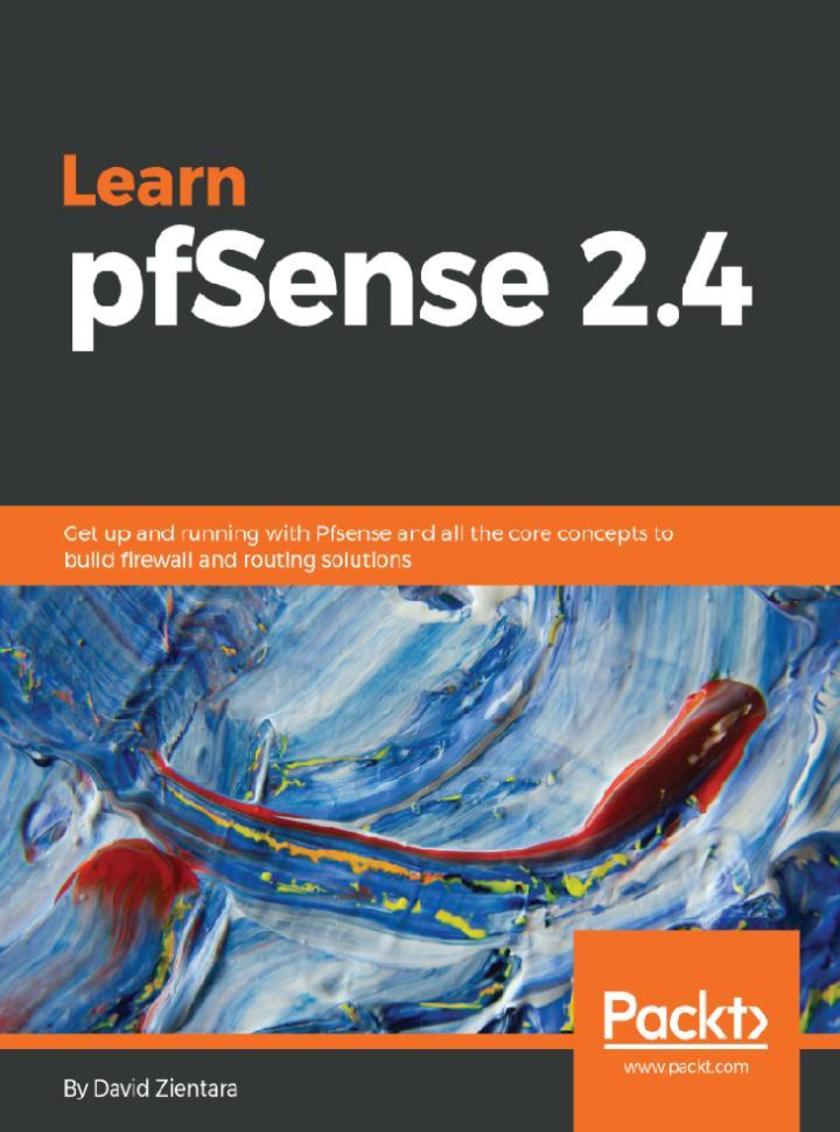
Learn pfSense 2.4
¥78.47
Build, design, and style beautiful and informative applications on the Salesforce Lightning platform Key Features *Build and Test Lightning Components that enhance application usability and adaptability *Apply Security Best Practices to your Custom Lightning Components *Design Lightning Components for Salesforce UIs such as Lightning Pages, Salesforce 1 Application, Communities, and more. Book Description Built on the Salesforce App Cloud, the new Salesforce Lightning Experience combines three major components: Lightning Design System, Lightning App Builder, and Lightning Components, to provide an enhanced user experience. This book will enable you to quickly create modern, enterprise apps with Lightning Component Framework. You will start by building simple Lightning Components and understanding the Lightning Components architecture. The chapters cover the basics of Lightning Component Framework semantics and syntax, the security features provided by Locker Service, and use of third-party libraries inside Lightning Components. The later chapters focus on debugging, performance tuning, testing using Lightning Testing Services, and how to publish Lightning Components on Salesforce AppExchange. What you will learn *Understand Lightning Components architecture *Learn Locker security best practices *Debug and Improve performance of your Lightning Components *Use third-party libraries along with Lightning Component Framework *Learn how to publish Lightning Components on AppExchange *Use Lightning Out to take your Lightning Components outside the Salesforce platform Who this book is for This book is for Salesforce developers or developers from other platforms who are familiar with HTML, CSS, and JavaScript and want to build and test Salesforce Lightning components. No knowledge of Salesforce Lightning is required.
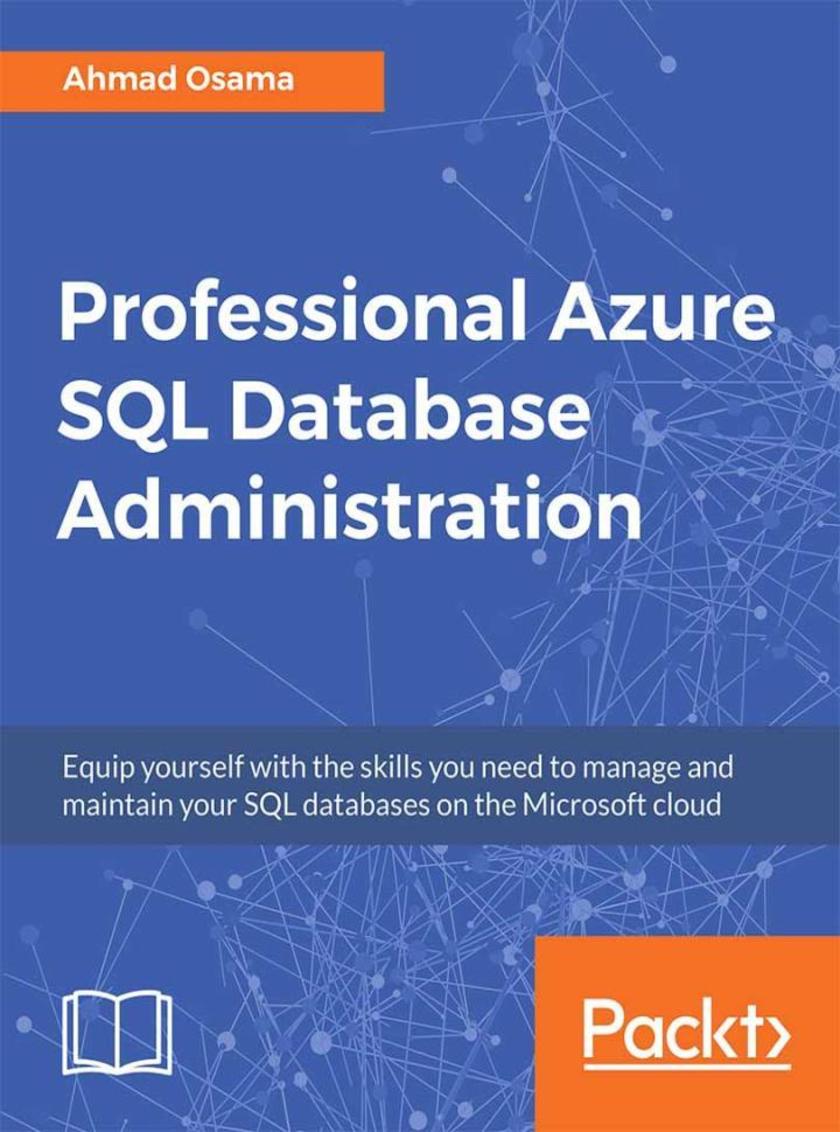
Professional Azure SQL Database Administration
¥87.19
If your application source code is overly verbose, it can be a nightmare to maintain. Write concise and expressive, type-safe code in an environment that lets you build for the JVM, browser, and more. Key Features *Expert guidance that shows you to efficiently use both object-oriented and functional programming techniques *Understand functional programming libraries, such as Cats and Scalaz, and use them to augment your Scala development *Perfectly balances theory and hands-on exercises, assessments, and activities Book Description This book teaches you how to build and contribute to Scala programs, recognizing common patterns and techniques used with the language. You’ll learn how to write concise, functional code with Scala. After an introduction to core concepts, syntax, and writing example applications with scalac, you’ll learn about the Scala Collections API and how the language handles type safety via static types out-of-the-box. You’ll then learn about advanced functional programming patterns, and how you can write your own Domain Specific Languages (DSLs). By the end of the book, you’ll be equipped with the skills you need to successfully build smart, efficient applications in Scala that can be compiled to the JVM. What you will learn *Understand the key language syntax and core concepts for application development *Master the type system to create scalable type-safe applications while cutting down your time spent debugging *Understand how you can work with advanced data structures via built-in features such as the Collections library *Use classes, objects, and traits to transform a trivial chatbot program into a useful assistant *Understand what are pure functions, immutability, and higher-order functions *Recognize and implement popular functional programming design patterns Who this book is for This is an ideal book for developers who are looking to learn Scala, and is particularly well suited for Java developers looking to migrate across to Scala for application development on the JVM.
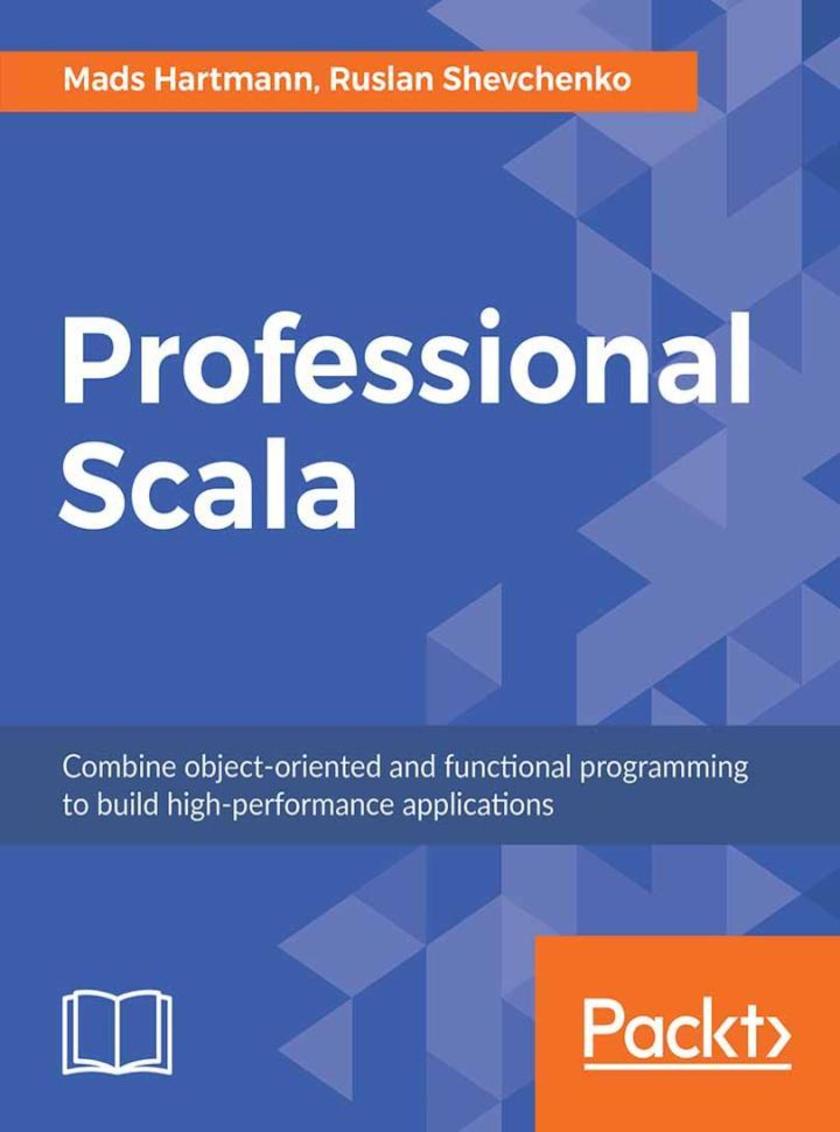
Professional Scala
¥69.75
Build smart applications by implementing real-world artificial intelligence projects Key Features *Explore a variety of AI projects with Python *Get well-versed with different types of neural networks and popular deep learning algorithms *Leverage popular Python deep learning libraries for your AI projects Book Description Artificial Intelligence (AI) is the newest technology that’s being employed among varied businesses, industries, and sectors. Python Artificial Intelligence Projects for Beginners demonstrates AI projects in Python, covering modern techniques that make up the world of Artificial Intelligence. This book begins with helping you to build your first prediction model using the popular Python library, scikit-learn. You will understand how to build a classifier using an effective machine learning technique, random forest, and decision trees. With exciting projects on predicting bird species, analyzing student performance data, song genre identification, and spam detection, you will learn the fundamentals and various algorithms and techniques that foster the development of these smart applications. In the concluding chapters, you will also understand deep learning and neural network mechanisms through these projects with the help of the Keras library. By the end of this book, you will be confident in building your own AI projects with Python and be ready to take on more advanced projects as you progress What you will learn *Build a prediction model using decision trees and random forest *Use neural networks, decision trees, and random forests for classification *Detect YouTube comment spam with a bag-of-words and random forests *Identify handwritten mathematical symbols with convolutional neural networks *Revise the bird species identifier to use images *Learn to detect positive and negative sentiment in user reviews Who this book is for Python Artificial Intelligence Projects for Beginners is for Python developers who want to take their first step into the world of Artificial Intelligence using easy-to-follow projects. Basic working knowledge of Python programming is expected so that you’re able to play around with code
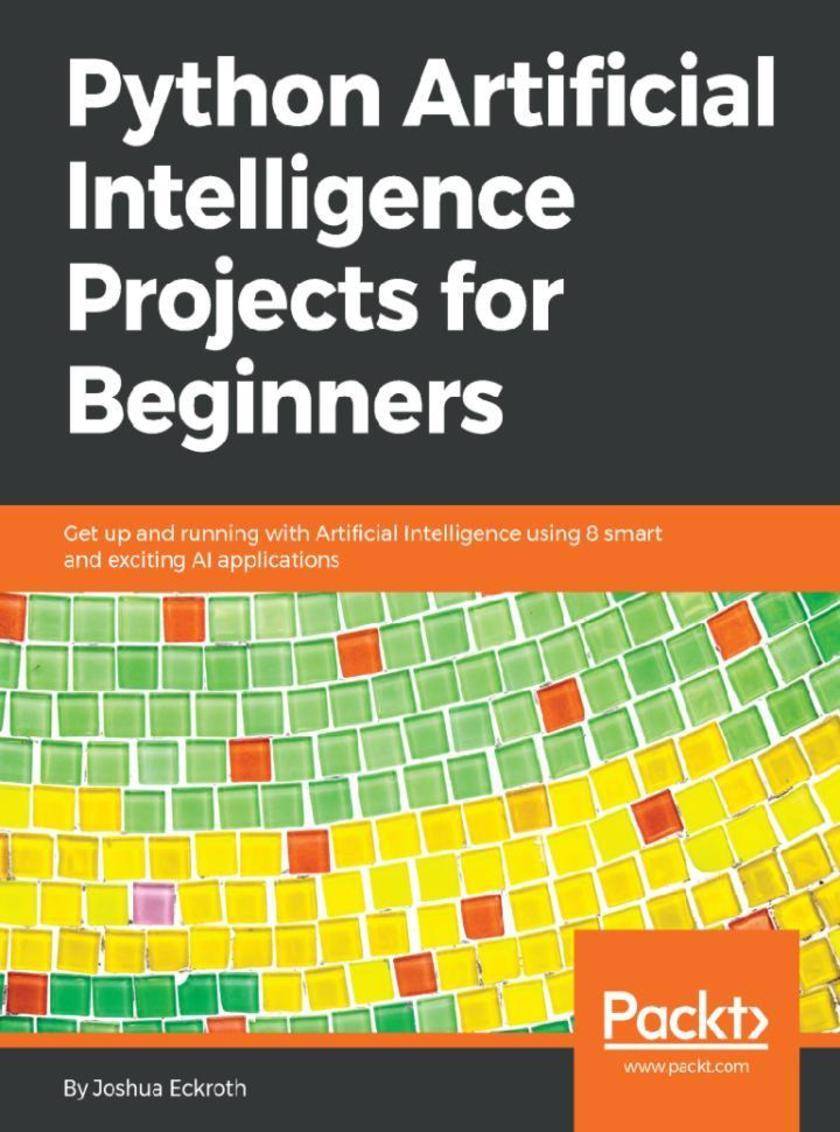
Python Artificial Intelligence Projects for Beginners
¥43.59
Real-world examples of cross-browser, mobile, and data-driven testing with all the latest features of Selenium WebDriver 3 Key Features *Unlock the full potential of Selenium to test your web applications *Use Selenium Grid for faster, parallel running, and cross-browser testing *Test iOS and Android Apps with Appium Book Description Selenium WebDriver is an open source automation tool implemented through a browser-specific driver, which sends commands to a browser and retrieves results. The latest version of Selenium 3 brings with it a lot of new features that change the way you use and setup Selenium WebDriver. This book covers all those features along with the source code, including a demo website that allows you to work with an HMTL5 application and other examples throughout the book. Selenium WebDriver 3 Practical Guide will walk you through the various APIs of Selenium WebDriver, which are used in automation tests, followed by a discussion of the various WebDriver implementations available. You will learn to strategize and handle rich web UI using advanced WebDriver API along with real-time challenges faced in WebDriver and solutions to handle them. You will discover different types and domains of testing such as cross-browser testing, load testing, and mobile testing with Selenium. Finally, you will also be introduced to data-driven testing using TestNG to create your own automation framework. By the end of this book, you will be able to select any web application and automate it the way you want. What you will learn *Understand what Selenium 3 is and how is has been improved than its predecessor *Use different mobile and desktop browser platforms with Selenium 3 *Perform advanced actions, such as drag-and-drop and action builders on web page *Learn to use Java 8 API and Selenium 3 together *Explore remote WebDriver and discover how to use it *Perform cross browser and distributed testing with Selenium Grid *Use Actions API for performing various keyboard and mouse actions Who this book is for Selenium WebDriver 3 Practical Guide is for software quality assurance/testing professionals, software project managers, or software developers interested in using Selenium for testing their applications. Prior programming experience in Java is necessary.
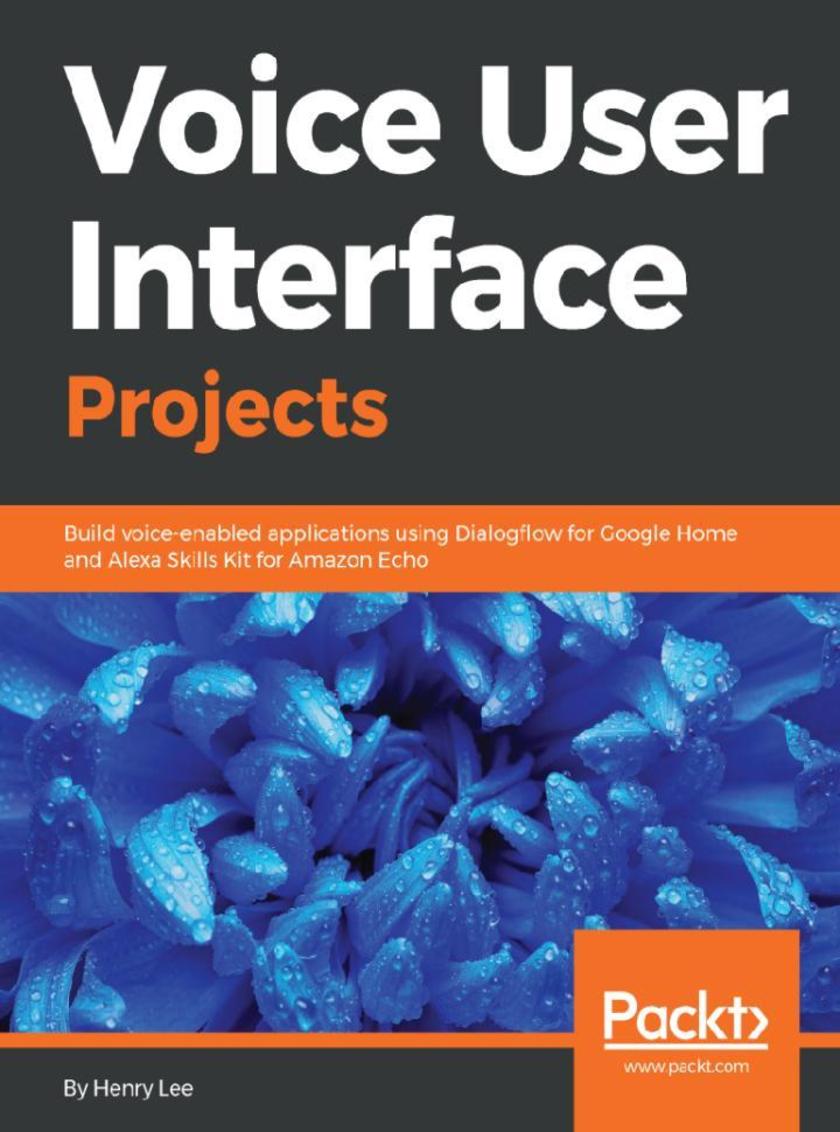
Voice User Interface Projects
¥69.75
Build optimized applications in Kotlin by learning how to make use of the standard library features the smart way Key Features *Get the most out of the Kotlin library to develop high-quality portable applications *Explore the powerful support for data processing and I/O operations *Discover ways to enhance your Android application development Book Description Given the verbosity of Java, developers have turned to Kotlin for effective software development. The Kotlin standard library provides vital tools that make day-to-day Kotlin programming easier. This library features the core attributes of the language, such as algorithmic problems, design patterns, data processing, and working with files and data streams. The recipes in this book offer coding solutions that can be readily executed. The book covers various topics related to data processing, I/O operations, and collections transformation. We'll walk through effective design patterns in Kotlin and you'll understand how coroutines add new features to JavaScript. As you make your way through the chapters, you'll learn how to implement clean, reusable functions and scalable interfaces containing default implementations. In the concluding chapters, we'll provide recipes on functional programming concepts, such as lambdas, monads, functors, and Kotlin scoping functions. By the end of the book, you'll be able to address a range of problems that Kotlin developers face by implementing easy-to-follow solutions. What you will learn *Work with ranges, progressions, and sequences in use cases *Add new functionalities to current classes with Kotlin extensions *Understand elements such as lambdas, closures, and monads *Build a REST API consumer with Retrofit and a coroutine adapter *Discover useful tips and solutions for making your Android projects *Explore the benefits of standard library features Who this book is for This book is for software developers who are familiar with Kotlin’s basics and want to discover more advanced features and concepts, especially those provided by the Kotlin standard library. It’s also ideal for experienced software developers who are familiar with the functional programming paradigm and other programming languages who want to switch to Kotlin. It will also help Java developers switch to Kotlin and integrate it into existing Java Virtual Machine (JVM) projects.

Mastering The Faster Web with PHP, MySQL, and JavaScript
¥66.48
Make web applications run faster by using advanced PHP, SQL and JavaScript techniques About This Book ? Use a customized PHP stack to create efficient data-driven web applications ? Ensure seamless implementation of a JavaScript & HTML 5 CSS based frontend and PHP based backend. ? Learn about problem identification, best strategies, and UI design patterns as well to build a clean, fast web application Who This Book Is For The audience for this book would be PHP developers who have some basic knowledge of PHP programming and Web technologies. JavaScript programming knowledge is not necessary. What You Will Learn ? Install, confgure, and use profling and benchmarking testing tools ? Understand how to recognize optimizable data structures and functions to effectively optimize a PHP7 application ? Diagnose bad SQL query performance and discover ways to optimize it ? Grasp modern SQL techniques to optimize complex SQL queries ? Identify and simplify overly complex JavaScript code ? Explore and implement UI design principles that effectively enhance the performance ? Combine web technologies to boost web server performance In Detail This book will get you started with the latest benchmarking, profiling and monitoring tools for PHP, MySQL and JavaScript using Docker-based technologies. From optimizing PHP 7 code to learning asynchronous programming, from implementing Modern SQL solutions to discovering Functional JavaScript techniques, this book covers all the latest developments in Faster Web technologies. You will not only learn to determine the best optimization strategies, but also how to implement them. Along the way, you will learn how to profile your PHP scripts with Blackfire.io, monitor your Web applications, measure database performance, optimize SQL queries, explore Functional JavaScript, boost Web server performance in general and optimize applications when there is nothing left to optimize by going beyond performance. After reading this book, you will know how to boost the performance of any Web application and make it part of what has come to be known as the Faster Web. Style and approach The book has a step by step practical approach to developing highly efficient Web applications, with many practical and useful code snippets.
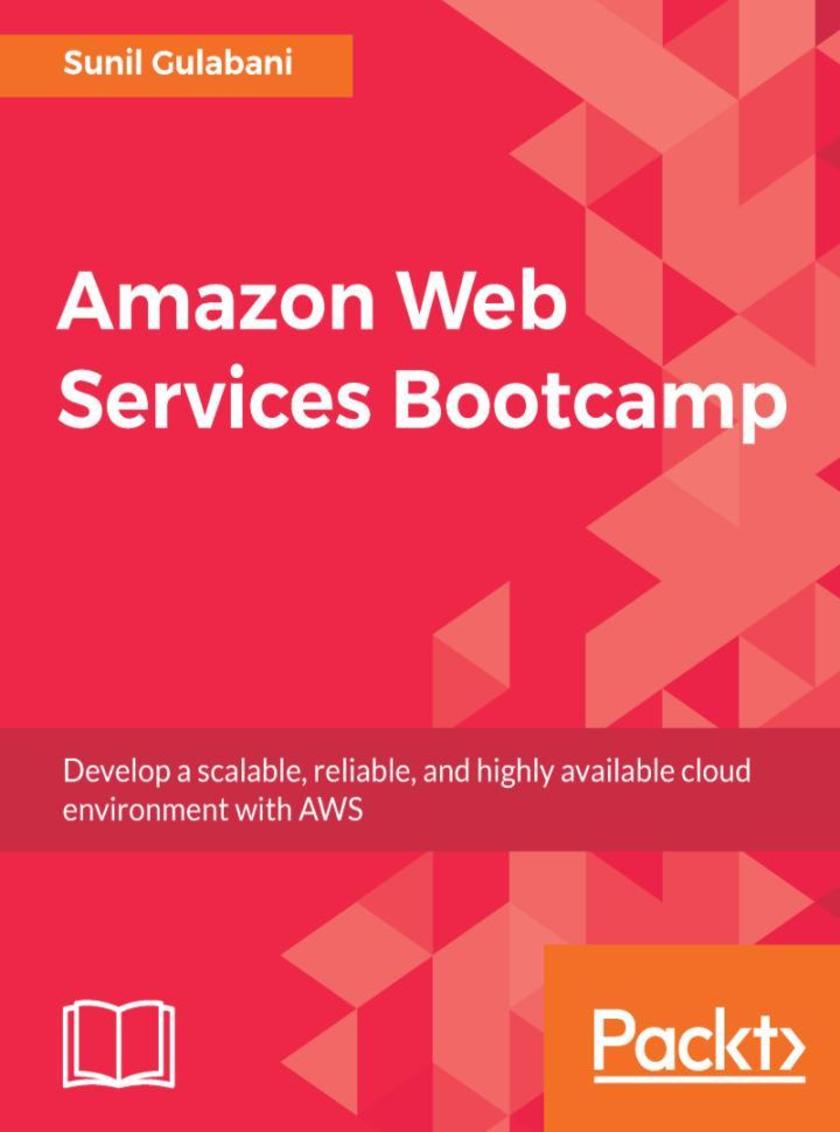
Amazon Web Services Bootcamp
¥73.02
This fast-paced guide will quickly enhance your skills to develop a highly scalable Cloud environment About This Book ? Efficiently build a highly scalable and reliable cloud environment for your applications with AWS ? Leverage the various AWS components and services to build a secure, reliable, and robust environment to host your applications on ? This quick-start guide will quickly enhance your skills to develop highly scalable services Who This Book Is For This book is for IT professionals and system administrators looking to design, deploy, and manage your applications and services on the AWS cloud platform. It’s also ideal for developers looking to build highly scalable cloud-based services. A basic understanding of AWS would be beneficial. What You Will Learn ? Find out about IAM to access AWS services securely ? Explore EC2 (virtual server) and scale up/down your application based on heavy traffic ? Learn about unlimited data storage service S3 and host a static website within minutes ? Get to grips with Relational Databases and NoSQL databases under the AWS ecosystem ? Understand the caching mechanism ? Get to know about notifications service and monitor AWS services ? Secure and troubleshoot your AWS architecture In Detail AWS is at the forefront of Cloud Computing today. Businesses are adopting AWS Cloud because of its reliability, versatility, and flexible design. The main focus of this book is teaching you how to build and manage highly reliable and scalable applications and services on AWS. It will provide you with all the necessary skills to design, deploy, and manage your applications and services on the AWS cloud platform. We’ll start by exploring Amazon S3, EC2, and so on to get you well-versed with core Amazon services. Moving on, we’ll teach you how to design and deploy highly scalable and optimized workloads. You’ll also discover easy-to-follow, hands-on steps, tips, and recommendations throughout the book and get to know essential security and troubleshooting concepts. By the end of the book, you’ll be able to create a highly secure, fault tolerant, and scalable environment for your applications to run on. Style and approach This book is all about fast and intensive learning. That means we don’t waste time helping you get started. The new features provided by AWS resources are being covered with highly-effective examples to develop new things, demonstrating different ways to create and use the AWS resources efficiently.




 购物车
购物车 个人中心
个人中心



